
Back in February, I made the following comments with regards to the upswing in housing finance commitments in December 2011 on the back of strong first home buyer (FHB) demand:
No doubt the housing-addicted broader media will argue that the recent upswing in housing finance commitments, as well as the renewed interest from FHBs, signals that the housing market is recovering and that solid price growth will soon return. I, however, urge caution in reading too much into these results.
We all know that the New South Wales (NSW) State Government announced in September 2011 that it would end the generous stamp duty concessions provided on pre-existing dwellings on 31 December 2011. Predictably, this announcement led to a surge of buying from NSW first home buyers, which has acted to push-up the national figures in the process…
Clearly, the overall upswing in housing finance commitments nationally has been driven, by and large, by increased NSW FHB activity as buyers rushed to beat the 31 December deadline for the removal of stamp duty concessions. Given that this deadline has now passed, we can expect some pull-back from NSW FHBs going forward, which should act to reduce overall finance commitments in the months ahead.
As predicted, housing finance commitments (excluding refinancings) fell by -7.3% in the three months to March 2012 – from 31,667 in December 2011 to 29,369 – and are now hovering near decade lows some -16% below the 5-year moving average (5YMA) level:
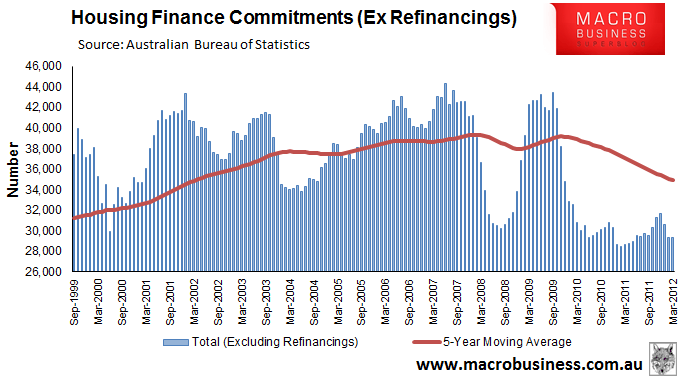
The fall in finance commitments has been driven, to a large extent, by declining interest from FHBs. The number of FHB commitments nationally fell by -19% in the first three months of 2012 and was -24% below the 5YMA as at March 2012. Similarly, the share of total mortgages going to FHBs declined from 21% in December 2011 to 16% in March and remains well below the five-year moving average of 20% (see below charts).
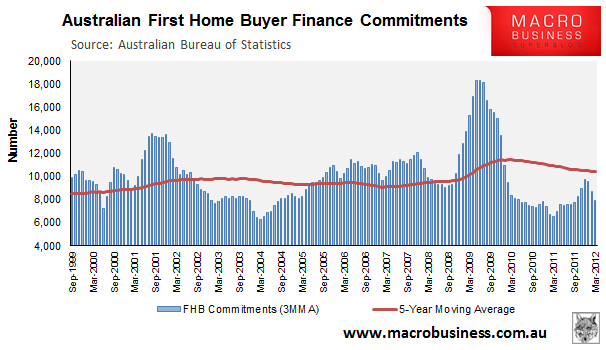
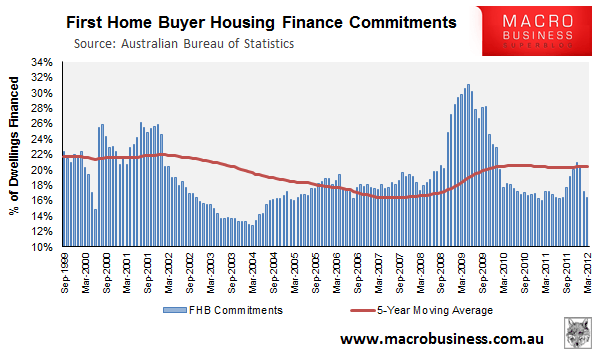
With the exception of the mining states, FHB demand across Australia is weak. The below charts summarise the situation at the mainland state level. Note that since the data is not seasonally adjusted, it is shown on a 3-month moving average (3MMA) basis in order to reduce volatility.
First, consider New South Wales, where the number of FHB finance commitments have almost halved since December 2011 on the back of the expiry of the FHB stamp duty concessions. The number of FHB commitments (3MMA) in March 2012 was -35% below the 5YMA level, whereas the FHB share has plummeted to only 12% – well below both the level in December 2011 (26%) and the 5YMA level (22%).
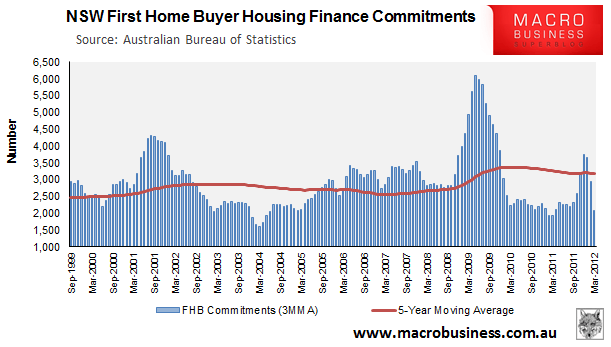
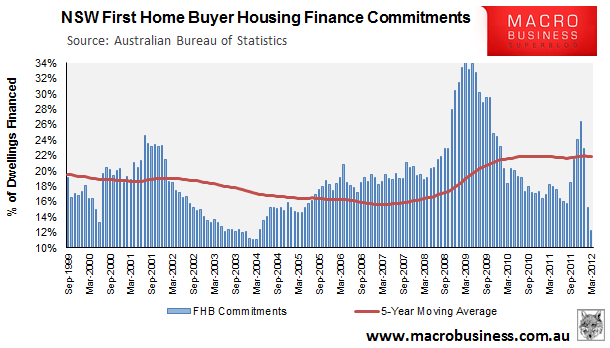
Next, Victoria, where the number of FHB commitments have fallen -7% since December 2011 and were -27% below the 5YMA level. Similarly, the share of total mortgages going to FHBs commitments was only 18% in March 2012, well below the 5YMA level of 21%.
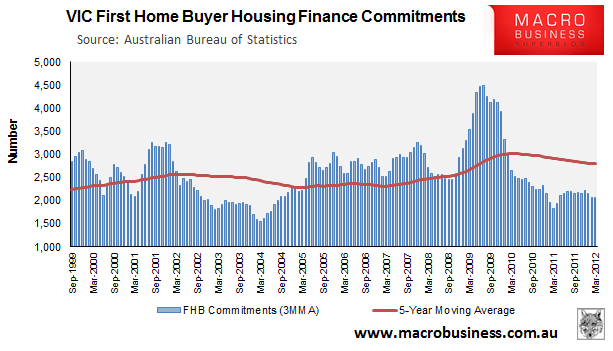
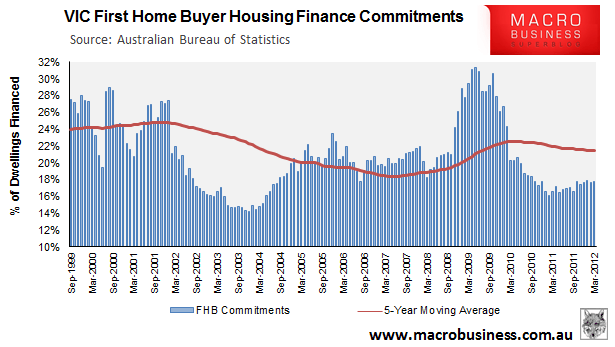
South Australia’s FHB finance commitments remain very weak, with the number of FHB commitments some -30% below their 5YMA, with the FHB share of total mortgages (14%) also well below the 5YMA (17%).
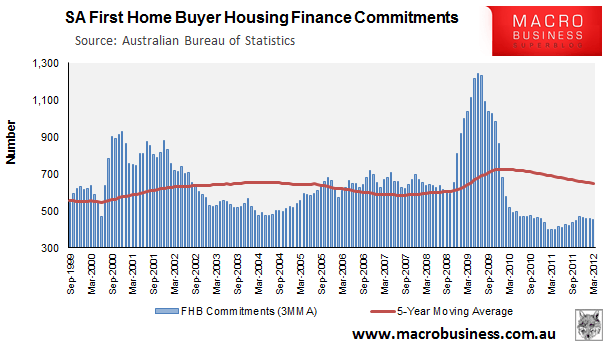
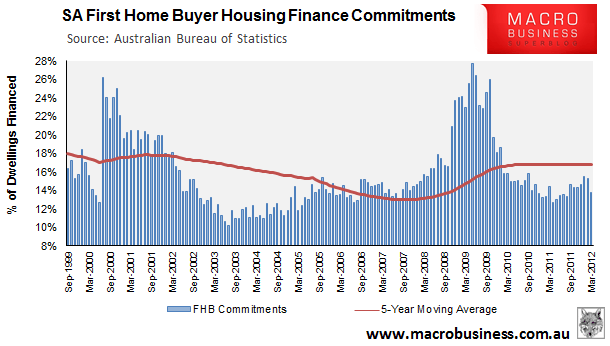
But the weakness in the non-mining and national averages does disguise better news for the mining states. In Queensland, FHBs have made a come back. While the number of FHB commitments remained -17% below the 5YMA in March and roughly equal to December 2011, they are well up on the lows reached in early 2011. The share of total mortgages going to FHBs commitments (19%) was also just above the 5YMA level.
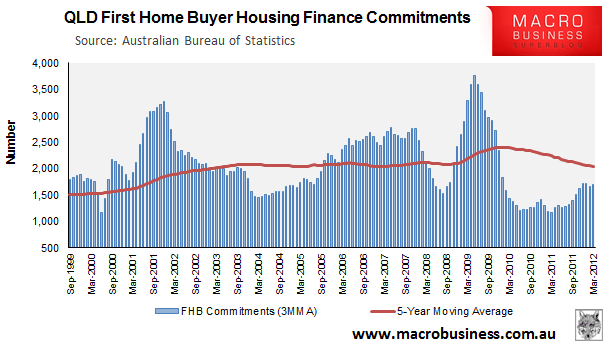
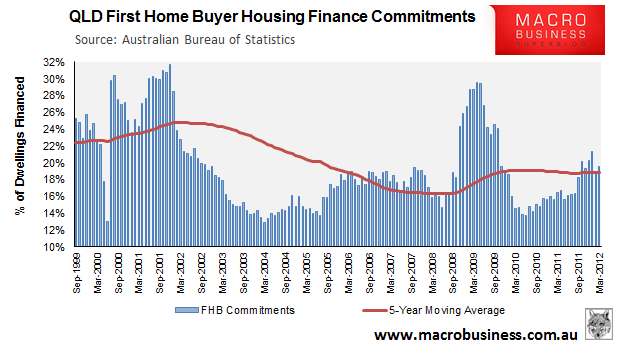
It’s a better story still in Western Australia, where the number of FHB commitments have been trending up strongly, but remained -5% below their 5YMA level in March 2012. FHB’s share of total mortgages (20%) were also only slightly below the 5YMA level (21%).
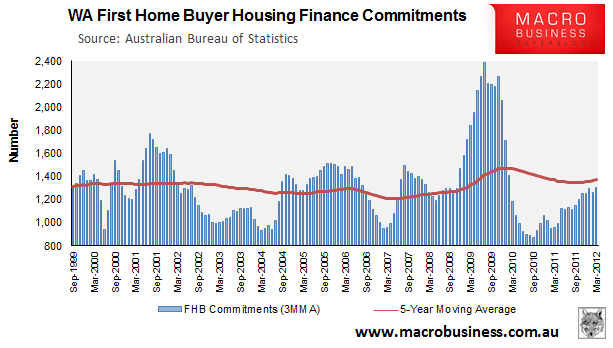
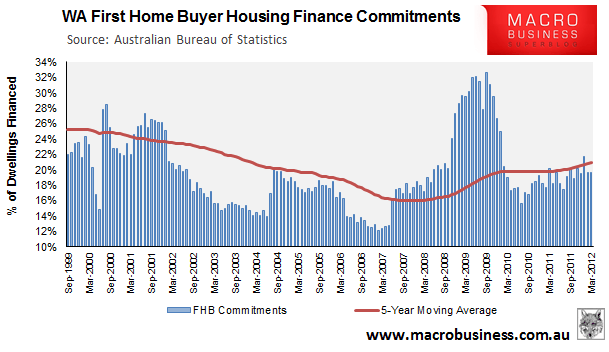
The FHB market, along with investors, are the key source of new mortgage demand and chief enablers of the upgrader market (since second time buyers typically sell to FHBs or investors). The overall drop-off in FHB demand over the first quarter of 2012 is a worrying sign for the Australian housing market which, according to RP-Data Rismark, is losing steam fast.
If recent interest rate shifts don’t pique greater FHB interest, Australian housing is likely to suffer further price falls.

